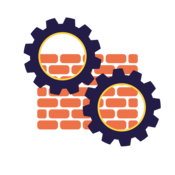Understand
Measuring the value of open ecosystems: 2. APIs

How we view open ecosystems
Our core mission is to measure the value of open ecosystems in order to enable all stakeholders to participate and co-create their own value.
We describe open ecosystems as a network of equitable participation opportunities that allow stakeholders to co-create, collaborate, complement, and/or compete with each other by using common tools (APIs) and infrastructures.
Your can read more about our view of open ecosystems and how they differ from platforms and closed ecosystems in Part 1 of our series on how we measure the value of open ecosystems.
How APIs are central to open ecosystems
We want to demonstrate the potential of open ecosystems in these areas so we measure:
- How the ecosystems are growing
- How they are enabling each stakeholder to participate and generate their own value, and
- How they foster partnerships that can solve complex problems together.
At Platformable, we are mostly focused on how APIs are used to enable open ecosystems, but there are other technologies that are used. Open source technologies, open data, and standards, for example, are other types of digital components that also enable an open ecosystem of stakeholders. Often, APIs are used to unlock the value of open data (but not always) or to connect open source technologies, so we have chosen to start our ecosystem measurement system by focusing on APIs as the central unit in an open ecosystem.
Drawing on definitions from thought leaders like Mehdi Medjaoui and leadership organisations like Open Data Institute, we define APIs as:
In the book Measuring the Business Value of Cloud Computing, researchers describe APIs as:
Key API roles in open ecosystems
In an open ecosystem using APIs, then, we see four key roles:
- API providers/producers (supply-side)
- API consumers (demand-side)
- End users
- Indirect beneficiaries.
| Role | Description |
|---|---|
| API providers/ producers | Entities that make APIs available for use by others. |
| API consumers | Entities that use available APIs to create products and services, to automate workflows, and to ingest large datasets for machine learning. |
| End users | Users of products and services that have been built using APIs. |
| Indirect beneficiaries | Entities that benefit from the increasing use of APIs but may not be directly involved in the value chain of API production, consumption and end use. |
Types of APIs
While open APIs are the most common form of API used in an open ecosystem, we use Cyril Vart’s categorisations of APIs to categorise APIs as open, partner or private APIs. All three have a role in open ecosystems.

Open: Open APIs allow entities to publicly expose information and functionalities of one or various systems and applications to third parties that do not necessarily have a relationship with them. They are the core standard unit that enables value to flow within an open ecosystem.

Partner: Partner APIs are used to facilitate communication and integration of software between an entity and its partners. They enable value to flow between open ecosystem stakeholders that have entered into a specific relationship to co-create, collaborate or complement each other, usually in order to compete together or as part of a paid relationship

Private: Private APIs are used internally to facilitate the integration of different applications and systems used by a company. An internal API-enabled infrastructure is usually a prerequisite to opening APIs to partners more broadly.
The importance of these roles may differ for stakeholders and enablers. For example, in a digital government context, governments can play all four roles, using all three types of APIs:
- A producer/provider may make APIs available internally to their own department to speed up digital services delivery (private APIs), to other departments (partner APIs), or exposed to external providers to build new products
- As an API consumer, one department may use APIs that are built by another department, or in Europe, one government may use interoperable APIs built by another Member State (open or partner APIs)
- As an end user, governments may use products that others have built using open APIs
- As an indirect beneficiary, governments see a greater range of digital products and services offered to their community. For example in Zaragoza, Spain, the government benefits from making a range of new apps available to citizens because app developers have built them using open APIs.
In summary
So far in this series, we have defined what we mean by open ecosystems and now we have described how APIs help connect systems, and enable the roles of various stakeholders in an open ecosystem model. In our next post, we will discuss the five types of relationship activity that occur amongst stakeholders in an open ecosystem. These five activities help drive and distribute value in an open ecosystem. Then in our final part, we will discuss why measuring value in open ecosystems is so important.
Our followup series will then explore the taxonomies and data models we use in each of the four domain areas that we measure here at Platformable. Together, these series aim to provide you with a comprehensive foundation of the open ecosystem model we use at Platformable.
We'd love to hear your thoughts and feedback. Please feel free to book a time with our team via our Calendly:

Mark Boyd
DIRECTORmark@platformable.com